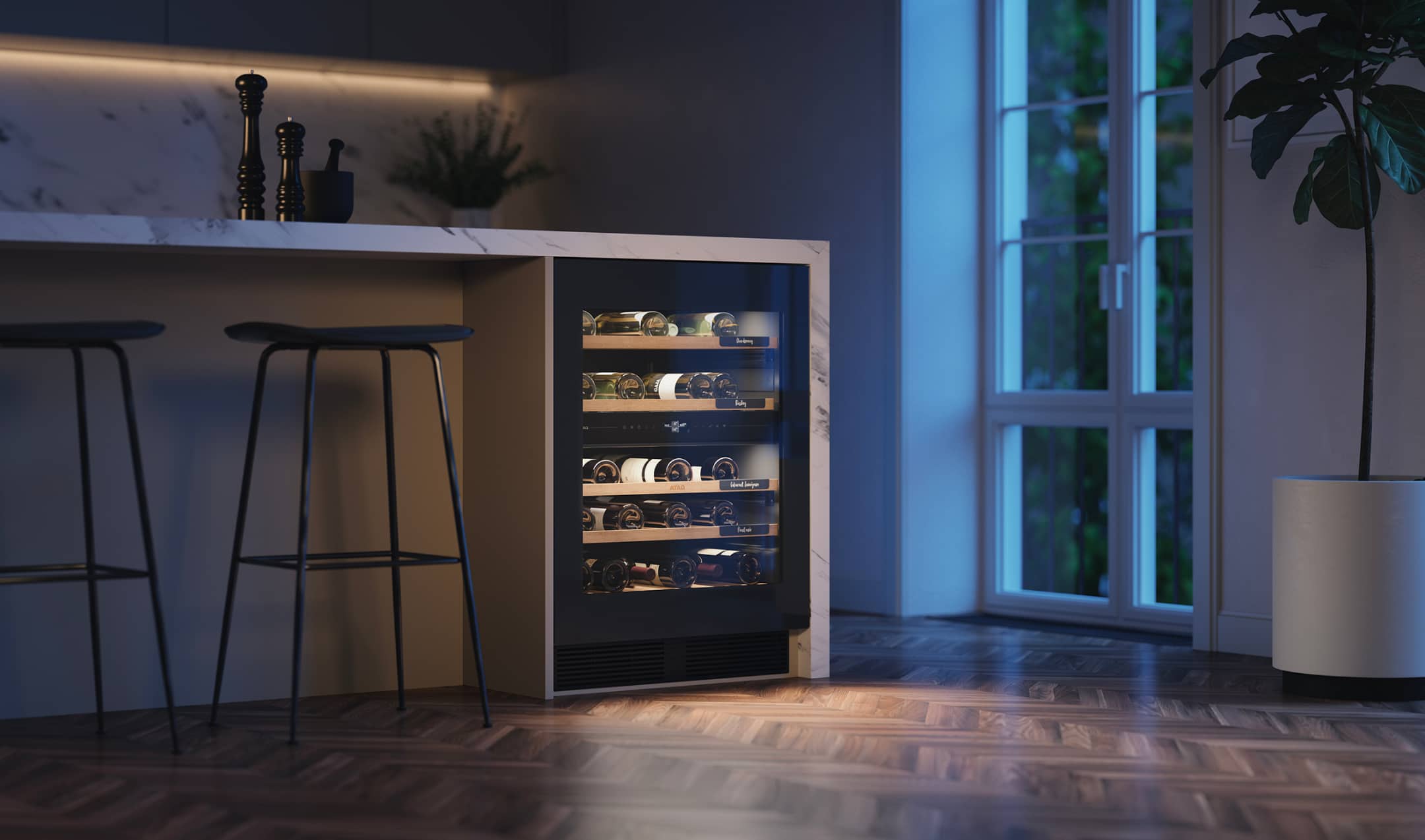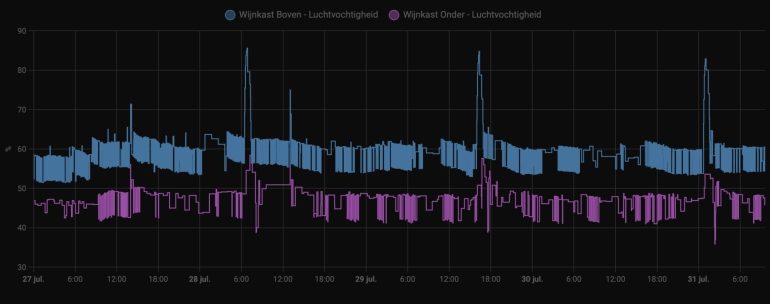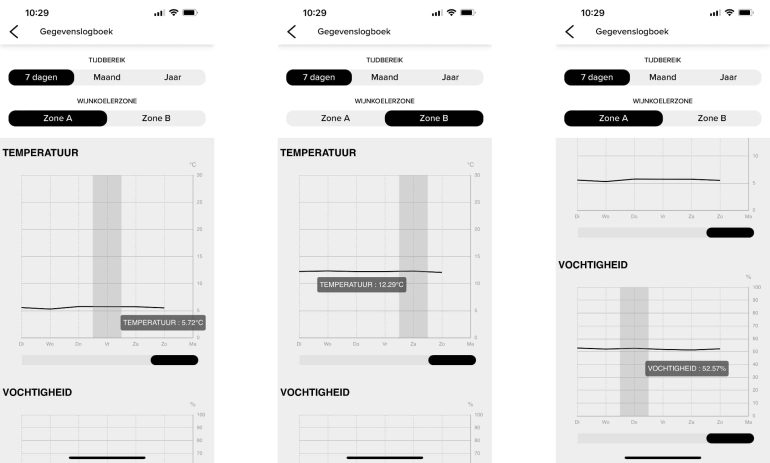Quality
All of these handy and smart options and features are great of course, but a wine climate cabinet should basically keep your wine in an optimal environment. And you can, of course, expect that from a €3,000 wine climate cabinet. Fortunately, the ATAG KU8574K2C does what it promises almost perfectly.
We’ve been keeping a close eye on the device’s temperature, humidity, and noise levels for the past few weeks. The upper zone is used for white wines, with a target temperature of 8 degrees, while the lower zone is used for red wines, with a target temperature of 13 degrees. Humidity should be at least around 50%, but preferably higher. The latter is very difficult for many tanks without active wetting. Both parts are measured with modified temperature and humidity sensors.
If we start with the temperature, the bottom area does almost exactly what is needed. At a target temperature of 13 degrees, we measure an average temperature of 13.3 degrees. In the graphs of the cabinet itself, we see that its sensor measures an average of 12.3 degrees. The up and down deviations are minimal, which indicates that the temperature remains very stable. The top area is having a slightly more difficult time, or the inner sensor has a slight skew. Here we measure an average temperature of 9.6 degrees at a target temperature of 8 degrees. If we set the target temperature to 6 degrees (see image), the measurements drop to an average of 7.7 degrees. Remarkably, the internal sensor shows an average temperature of 5.7 degrees in the graphs. Of course we have to include a slight deviation for all the sensors, but this difference is a little more than would be desirable. However, it can be compensated for by setting the temperature a little lower. However, the temperature is very stable. From our sensor graph we can also infer that the cabinet goes through a defrost cycle every day, causing the temperature in the upper area in particular to briefly rise by a few degrees. However, this is not a problem for wine. However, it remains a pity that we cannot read the government’s sensors in real time.
We can also be satisfied in terms of humidity. The upper zone is always between 54% and 62%, which is perfect. The lower region, which has a higher temperature, is logically lower. Still, the average cabinet volume is 47%, which is close to minimal but acceptable, especially if you don’t intend to age your wines for years. We have tanks creeping up at about 30% velocity, so ATAG is doing very well in that area. But, if you still want the humidity to be above 50%, you can purchase the optional humidity box. And by the way, the humidity we measured corresponded well to the values in the graphs of the device itself.
Listening to this wine climate cabinet is relaxing compared to the previous one (vinata). On paper, noise production should be a bit higher, but ATAG’s Wine Climate Cabinet is rarely where it is. Every now and then the cabinet turns on and you hear the compressor kick in for about 20 seconds, but once it’s on, the noise production is so low that it quickly disappears into the background. The number of starts is less, the noise production is lower and the frequency is also at a level that is more comfortable to the ears. So we are very satisfied in this regard.
We were positively surprised at the number of bottles we could store in the cupboard. On paper, that’s 38 bottles of Bordeaux, but nobody has only that size of bottles, so there are often fewer. Fortunately, we can store thicker bottles by removing the bottom shelf and there is more space between the shelves than in other cabinets, so you can relatively easily – with some bewilderment – store different sizes in the cabinet. We now have 30 bottles in the cupboard, with room for another 3-5 bottles.

“Thinker. Coffeeaholic. Award-winning gamer. Web trailblazer. Pop culture scholar. Beer guru. Food specialist.”








More Stories
Grass snake and lizard are rare – Zeeuwsch Vlaanderen Advertisement | Zeeuwsch Flemish Advertising Magazine
Belgian co-production with acclaimed actor Crispin Glover selected for Toronto Film Festival
Sony is rolling out a new PlayStation 5 system update that includes the option to share game invites via URLs.